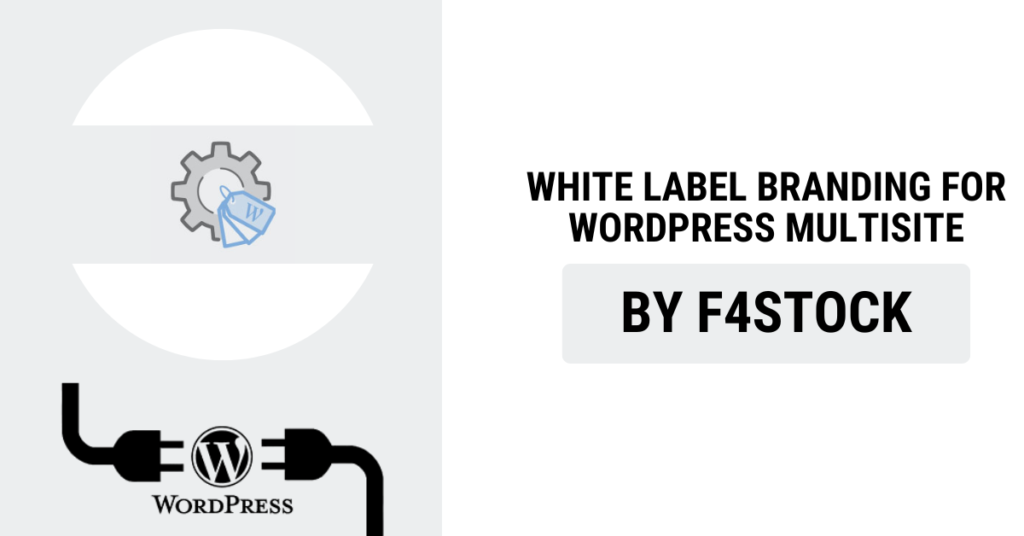White label branding has become a popular strategy for businesses and agencies looking to offer their services while maintaining a seamless and cohesive brand experience for clients. With WordPress Multisite, this approach is easier than ever to implement, allowing you to manage multiple websites under a single network with custom branding. In this ultimate guide, we’ll explore how you can successfully apply white label branding to your WordPress Multisite network, offering practical tips, benefits, and key steps to get started.
What is White Label Branding?
Before diving into WordPress Multisite, let’s first define white label branding. Essentially, white label branding involves rebranding a product, service, or platform to make it appear as if it’s your own. For example, in WordPress Multisite, you can customize the WordPress admin panel, login screens, themes, and other parts of the site to match your company’s branding, removing any trace of WordPress’s identity.
White label branding is common for agencies that manage multiple client websites or businesses that want to offer their own branded platform without the overhead of building a CMS from scratch.
Why Use White Label Branding for WordPress Multisite?
WordPress Multisite allows you to manage a network of websites from a single WordPress installation, making it an ideal solution for businesses and agencies with multiple clients or websites. By implementing white label branding in a Multisite environment, you can enjoy several key benefits:
- Consistent Branding: Ensure your brand identity remains intact across all websites, including the admin area and user interface, creating a professional, cohesive experience.
- Efficient Management: Streamline the process of managing multiple websites under one roof, offering clients a unified system without confusion or external branding distractions.
- Customization Flexibility: Tailor the appearance and functionality of the network according to your needs, offering a highly personalized experience for each site within your multisite network.
- No WordPress Branding: For businesses that want a more corporate, branded feel, white label branding removes all visible traces of WordPress, making the platform appear like a bespoke solution.
Key Steps to White Label Your WordPress Multisite Network
Now that you understand the benefits, let’s look at how to implement white label branding on your WordPress Multisite network.
1. Remove WordPress Branding from the Admin Panel
One of the most important aspects of white label branding is removing all visible WordPress branding elements from the admin area. To do this, follow these steps:
- Custom Login Page: Customize the login screen so it features your branding instead of the default WordPress logo. You can do this manually by editing the login page or use plugins like Custom Login Page Customizer or LoginPress.
- Hide WordPress Footer Credits: The default WordPress footer contains a small credit link. To remove this, add custom code to your theme’s
functions.phpfile. For example:phpremove_filter( 'admin_footer_text', 'core_update_footer' );
- Change the WordPress Logo: The WordPress logo appears in the top-left corner of the admin dashboard. Replace it with your own logo by adding custom code to your theme’s
functions.phpor using a plugin like White Label CMS.
2. Branding the Dashboard and Admin Area
To give your network a truly customized look, you can use the White Label CMS plugin. This allows you to:
- Change the admin toolbar color.
- Add a custom logo to the admin dashboard.
- Replace the default WordPress color scheme with your own brand colors.
- Add custom welcome messages and footer text to provide a personalized experience.
With White Label CMS, you can give your client or users a branded experience as soon as they log into the admin area, aligning it with your business identity.
3. Customize Themes for Consistent Branding
For a truly seamless experience, ensure your theme reflects your brand across all sites. In a Multisite network, you can either:
- Use a Custom Theme: Create a custom theme that aligns with your brand’s look and feel. Once set up, you can activate it for all sites in your network.
- Modify the Default Theme: If you’re not ready to build a custom theme, you can modify an existing theme to match your branding, such as changing colors, fonts, and logos.
4. Customize the WordPress Admin Bar
The WordPress admin bar is visible to logged-in users. You can white-label this by:
- Removing unnecessary menu items.
- Adding custom items that link to your website or client-specific content.
- Changing the logo and the color scheme to match your brand.
Again, plugins like White Label CMS or custom coding can help with this process, making sure your admin bar stays clean and branded.
5. Create Custom Dashboards for Users and Clients
In a multisite setup, each site within the network can have its own dashboard. You can white-label the dashboard to make it more useful for clients or users by:
- Removing irrelevant widgets.
- Adding custom widgets that provide quick access to essential tools and resources.
- Offering a branded welcome message or tutorials.
This can be done through the White Label CMS plugin or through custom development, ensuring your clients have a tailored experience that reflects your brand.
6. Custom User Roles and Permissions
If you’re offering a white label solution to multiple clients, managing user roles and permissions is crucial. With WordPress Multisite, you can:
- Restrict access to certain features (like plugins or themes) depending on user roles.
- Provide clients with administrative roles while ensuring they can’t access WordPress-specific settings.
- Customize the user experience for each role to align with your branding guidelines.
This ensures that clients feel they are working within a customized environment that’s aligned with your brand’s objectives.
Key Plugins for White Label Branding in WordPress Multisite
Several plugins can assist in white label branding for WordPress Multisite. Here are some of the best options:
- White Label CMS: A comprehensive tool that helps you customize every aspect of the WordPress admin panel, from logos to color schemes.
- Custom Login Page Customizer: Allows you to brand the login screen and add custom login features.
- LoginPress: Another great tool for customizing the login page to better reflect your brand.
- Adminimize: Gives you full control over what admin menu items and settings are visible to different user roles.


